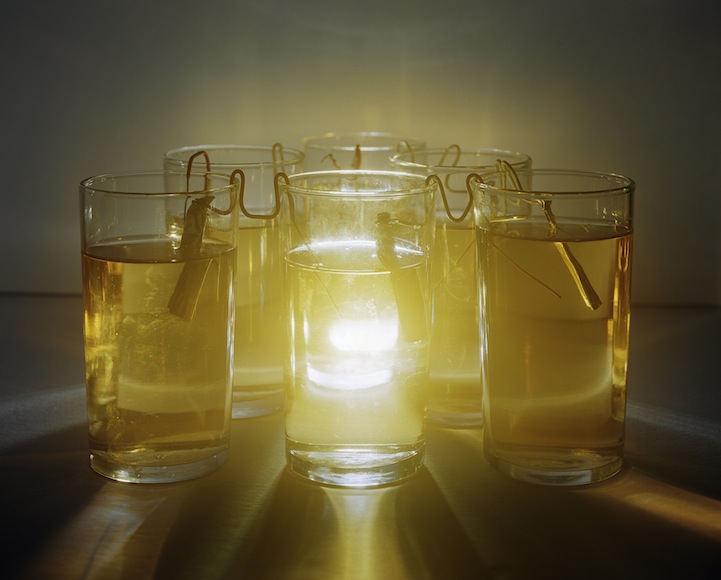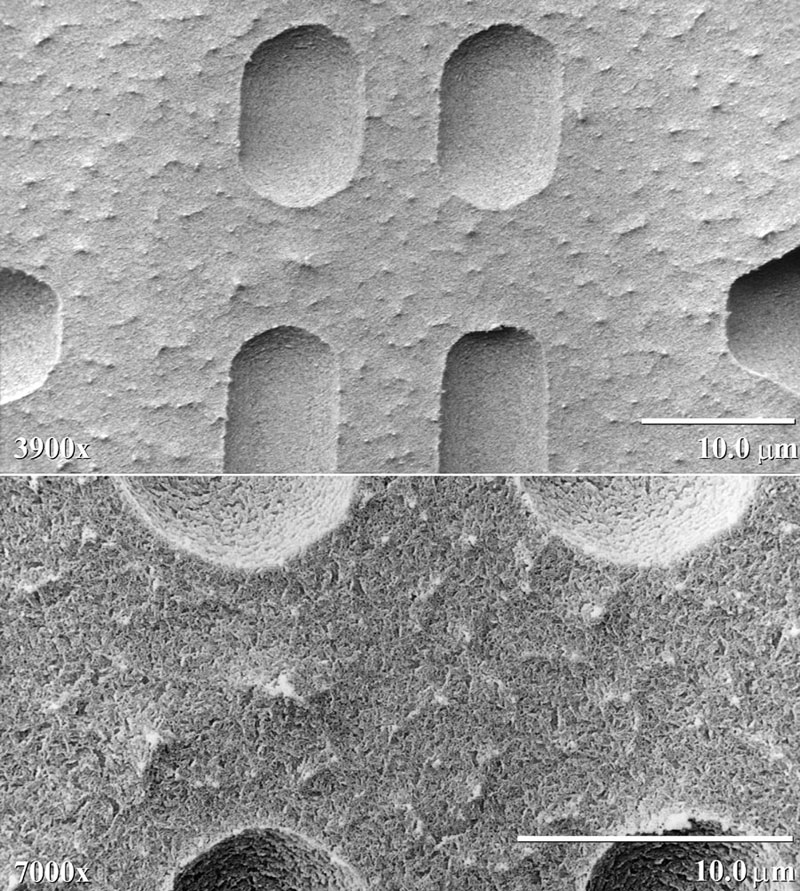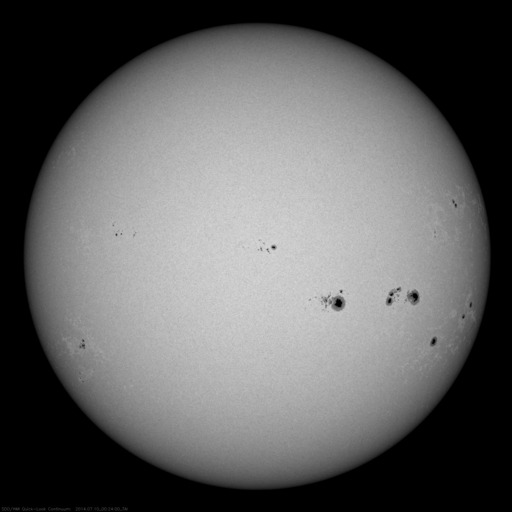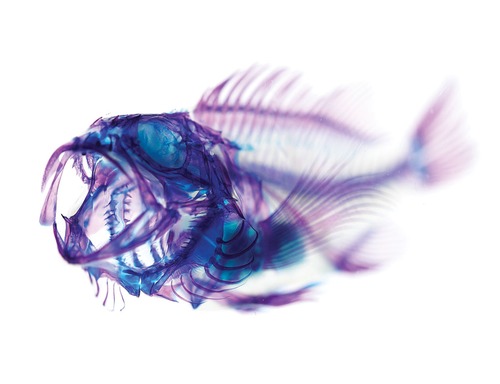Learning more about how viruses spread and how to resist the spread, I found this Vox explainer a great resource to understand and to share.
OMG Space - Gorgeous Art Infographics of Space Objects by Margot Trudell
This truly phenomenal project is from Margot Trudell, a graphic, web and motion designer living and working in Toronto, Canada. They are available as art prints or stretched canvas here. I am definitely wanting to get some for the kids' study.
From her project page:
OMG SPACE
With this project I wanted to communicate to people what we've managed to accomplish in space exploration in simple terms; I found that many people don't know much about the subject because of how it's typically communicated, with scientific and technical jargon. Through the use of infographics that simply and clearly illustrated a lot of information, people could easily take a brief look at one infographic and even without looking closer grasp that we've managed to send a lot of things and people to the moon for example, and looking closer they could see that China has plans for a manned lunar mission within the next few years, for example. This simple and easy to understand approach is meant to encourage people to look into the field more, and the OMG SPACE name is meant to encourage excitement about space exploration, especially amongst younger people. Infographics for the dwarf planets Haumea and Makemake were not created due to a lack of imagery available for use; it should be noted though that there have no no expeditions to either of thiese dwarf planets to date, and no expeditions are currently planned.
These infographics were intended for print, and thus the copy on most of them isn't easily legible when reduced in size and resolution for the web. I have included the blurbs about each planet below the image for easy reading. I researched and wrote all the blurbs myself, specifically choosing facts about each planet that I thought were particularily interesting, rather than standard facts like mass and age and geological make-up, to help people look at these planets in a different way than usual.
There is also a website associated with this project,omgspace.net. Aside from promotion, I used the web and the lack of limitations in web design to illustrate the true scale of our solar system. The images of all the planets and the distances between them are completely to scale, and there are links at the bottom of the page to take each visitor to whichever planet they choose; I also included the asteroid belt and the heliosphere for the sake of illustration, which are also placed correctly and sized to scale.






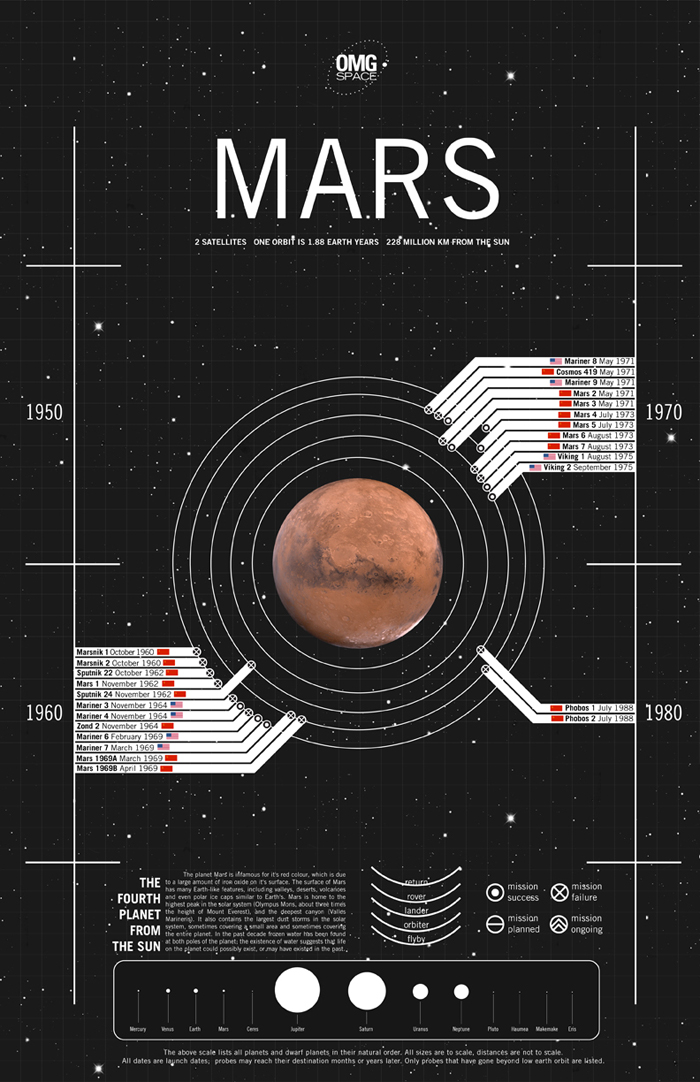







Still Lifes Lit By Their Own Electricity Brings Science and Art Together
This witty and gorgeous photo series, Back to Light, from photographer Caleb Charland, has fruit, vinegar and loose change generating enough power to light lamps and LED lights.
Charland explains:
"By inserting a galvanized nail into one side of a potato and a copper wire in the other side a small electrical current is generated. The zinc coating on the nail gives off electrons due to the electrolyte environment within the potato. These electrons then travel along the copper wire providing the electrical voltage to illuminate a small light emitting diode. The utter simplicity of this electrical phenomenon is endlessly fascinating for me."
Salt Bride — After 2 Years in the Sea this Bridal Dress is Coated with Salt Crystals
Israeli artist Sigalit Landau left this black gown in the Dead Sea for two years, checking in on it periodically.
You can see the final result, a thick coating of salt crystals in the photos that came out of the project or at London’s Marlborough Contemporary, where they’ll be on display until September 3rd.
Photo of the Day - Animated GIF Flyby of Saturn's Rings
The rings of Saturn are only about 30 feet (10 meters) thick in most parts of the main rings, other parts however are often up to several kilometers thick. The rings are made of dusty ice, in the form of boulder-sized and smaller chunks that gently collide with each other as they orbit around Saturn. Saturn’s gravitational field constantly disrupts these ice chunks, keeping them spread out and preventing them from combining to form a moon.
Lemur Catta
Animal Eyes up Close
Suren Manvelyan has made this outstanding photo series of the close up of Animal Eyes. Creepy, beautiful, amazing.
Lark
Blue-yellow macaw parrot
British short hair cat
Stingray
Snail
Discus fish
Coral zebra fish
Guinea pig
Tiger python (albino)
Nylus crocodile
Horse
Husky
Llama
Frog Reliquaries from Artist and Scientist Brandon Ballengée
Artist and scientist Brandon Ballengée has created this series "Malamp – Reliquaries".
Ballengée:
"These reliquaries are created by chemically “clearing and staining” terminally deformed frogs found in nature. This process obscures direct representation- as I do not want to exhibit large images of “monsters”, which would be frightening and be exploitative to the organisms. This process is followed by high-resolution scanner photography of each specimen to create individual portraits. These portraits are printed as unique watercolor ink prints (never made into editions) and each individual frog will be centered appearing to “float” in what looks to be clouds."












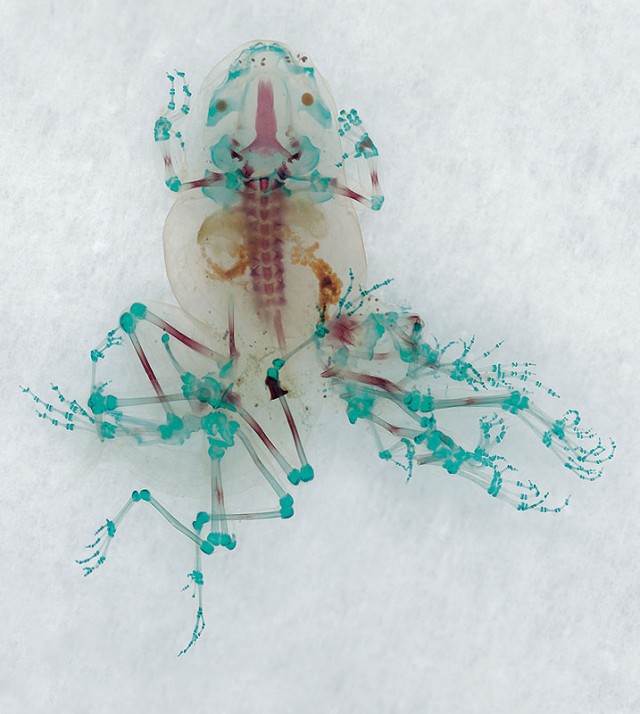
Snow Crystals In Electron Microscopes
Normally, researchers observe snow crystals at moderate levels of magnification (30X-500X). The electron microscope, however, allows for observation at over 100,000X.
The Yoga Skeleton - 3D Animations of the Human Body
In close conjunction with medical experts, these animators have created this awesome 3D visual study of the human skeleton.
Beautiful Chemical Reactions Filmed in Ultra HD
Beautiful Chemistry is a work of Tsinghua University Press and University of Science and Technology of China that used a 4K UltraHD camera to capture chemical reactions in all their beauty.
Solar Flares and Activities from NASA Solar Dynamics Observatory
NASA’s Solar Dynamics Observatory (Little SDO) creates composite images, like the lead image, the show a series of eruptions in color-indiciative imagery to make visible the differences in wavelengths. Others in the collection make visible differences in intensity, radiation levels, temperature. All of them are beautiful.
Living Things More Than 2,000 Years Old - Photos by Rachel Sussman
Rachel Sussman‘s Oldest Living Things in The World Book is the result of her near decade long efforts, alongside biologists, which took her around the world and into some of the harshest and remotest climates to document living things that have lived continuously for more than 2,000 years.
The book, which is a passionate and insightful melding of art, science, and travelogue, includes 124 photographs, 30 essays, infographics and forewords by Hans-Ulrich Obrist and Carl Zimmer, all centered around her quest to capture and share the scientific knowledge that we have discovered about these temporal giants.
There is also at the end of this post a great Creative Mornings talk that Sussman gave about the project while she was in the middle of it (Nov. 2010).
Spruce Gran Picea #0909 – 11A07 (9,550 years old; Fulufjället, Sweden)
Welwitschia Mirabilis #0707-22411 (2,000 years old; Namib-Naukluft Desert, Namibia)
Jōmon Sugi, Japanese Cedar #0704-002 (2,180-7,000 years old; Yakushima, Japan)
La Llareta (up to 3,000 years old; Atacama Desert, Chile)
Witty Animated GIFs with a Science Flavor from Hugo Germain
An engineering student in France, Hugo Germain, uses After Effects or Cinema 4D to create this fun and funny sciency GIFs.
Germain:
“Each gif has its own story but mainly it’s a way for me to provide inspiration and make people question basic things we take for granted. I often wonder “What if this or that was different/existed ? What would that look like ?”. Being able to actually create an answer to that question is very exciting for me, and I guess that’s also what people like about it.”
Breathtakingly Vibrant Close-up Timelapse of Coral and Sponges
Daniel Stoupin has made this stunning timelapse of what he refers to as "slow" marine creatures — coral and sponges whose wild movements are barely perceptible on our timescale.
This is definitely one to hit the FULL SCREEN on the video.
Stunning High Speed Photos of Burning Alcohol Vapors
Fabian Oefner has created these stunning high-speed photos of burning alcohol vapors that resemble organic forms more than they resemble fire.






Mars Desert Research Station - Photos by Jim Urquhart
Photojournalist Jim Urquhart has this great set of photos from the Mars Desert Research Station, which conducts dry runs for future Mars missions in the Utah desert.
From the Project Page:
"Mars is the great challenge of our time.
In order to help develop key knowledge needed to prepare for human Mars exploration, and to inspire the public by making sensuous the vision of human exploration of Mars, the Mars Society has initiated the Mars Analog Research Station (MARS) project. A global program of Mars exploration operations research, the MARS project will include four Mars base-like habitats located in deserts in the Canadian Arctic, the American southwest, the Australian outback, and Iceland. In these Mars-like environments, we will launch a program of extensive long-duration geology and biology field exploration operations conducted in the same style and under many of the same constraints as they would on the Red Planet. By doing so, we will start the process of learning how to explore on Mars."









Three-Dimensional Mid-Air Acoustic Manipulation
From the University of Tokyo and the Nagoya Institute of Technology, three engineers revealed a machine using sound waves to move objects through space in a controlled way, using four speakers to create intersecting soundwaves.
Dyed Transparent Specimens
Fisherman-turned-artist in Yokohama City, Japan, Tomita:
"Although these are just transparent specimens, they’re filled with the drama of organisms which I have so much love for. I want people to enjoy the beauty of life, treat life with respect and understand that there is drama happening that is not centered on themselves when they look at the specimens. These specimens which you see here are actually animals that have died for some some reason or whose carcasses were discarded from pet shops or fishermen. I use those animals which passed away and repurpose them."
Using the skeletons of various dead marine specimens, and bright shades of dye, the process strips down each creature to the toughest parts of its remains. Tomita has dyed more than 5,000 dead creatures since 2005, which is amazing, considering each piece takes at least a few weeks to complete, and some up to a year.
Sound Visualized in Sand
brusspup on YouTube creates these fascinating patterns called Chladni figures by pouring sand on a metal plate connected to a speaker and tone generator. Different frequencies create different patterns of sand on the plate, higher frequencies creating more complex figures.
Dancing Water: Cymatics Art Installation by Sven Meyer & Kim Pörksen
Sven Meyer & Kim Pörksen created Sonic Water, an art installation exploring cymatics.
Pörksen explains:
“Cymatics is like a magical tool that unveils the substance of things not seen. Sound does have form, and you can see that sound can affect matter and cause form in matter. So maybe in the beginning there was sound, which shaped all matter. Indeed, we think sound has a fundamental influence on the formation of the universe itself.”
Check out the behind the scenes video after the gallery.













